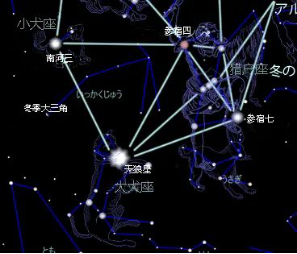
Star tracker image targets with a large brightness range in a dark background. The premise of star sensor operation is to detect effective navigation stars and extract them from the background. The main difficulty and key point is to extract darker navigation stars, which belongs to the problem of dark target detection and extraction. In signal processing, dark target extraction mainly depends on signal features and signal-to-noise ratio. The light emitted by stars at infinity is imaged by an optical system, forming a light spot with a certain energy distribution on the detector. The photosensitive detector integrates this energy to form stars.
In order to improve the measurement accuracy of the APS CMOS star sensor, the optical system design adopts a point diffusion binomial method; An important design principle of the star sensor optical system is to concentrate at least 90% of the energy within 3×3 pixels. If the energy concentration is too high, defocusing assembly can be carried out.
The star sensors are sensitive to multiple stars far from Earth. Astronomers have conducted long-term observations and classified stars into O, B, A, and FCKM7 spectral types based on their temperature and spectral characteristics. Each large spectral type is further divided into 10 subcategories according to the temperature range from 0 at the hot end to 9 at the cold end: B0, B,…, B9; A0, A1,…, A9, etc. O-shaped stars are blue stars; B-type stars are blue and white; Type A stars are white stars, while Vega and Sirius belong to Type A stars; F-type stars are yellow and white, while Polaris belongs to F-type stars; A G-type star is a yellow house, and the sun belongs to a G-type star, specifically a C2 type star; K-shaped stars are orange red stars; M-shaped stars are red stars. The APS CMOS photodetector uses silicon (Si) material for optical/electrical conversion, and the maximum brightness sensor area belongs to the yellow to red type.
Usually, stars are treated as black rest radiation to calculate the energy density corresponding to each wavelength, and the energy of black body radiation is mainly faster than the temperature of the star itself.
Magnitude visual was first developed by the ancient Greek astronomer Hipparchus, who divided the 1022 stars in his catalog into six levels based on brightness, ranging from 1 to 6. In 1850, British astronomer Thompson discovered that first-class stars were 100 times brighter than sixth class stars. According to this relationship, magnitude is quantified. The brightness difference between the redefined magnitudes is 2.512 times, and the apparent magnitude of 1l (brightness unit) is -13.98.
However, the magnitude cannot describe the brightness of all celestial bodies discovered at that time, and astronomers have extended the original level to introduce the concept of negative magnitude. In this way, the entire visual magnitude system has been used to this day. In the design of star sensors, the concept of magnitude is used to predict and estimate the detection ability and other parameters of the star sensor.
Many of the spectra that star sensors can sense belong to spectrum G, which is very close to the spectrum G2 of the sun. Therefore, the sun is used as a reference for analysis and calculation as the basis for the entire system.
The optical system design of the star sensor should minimize reflection and dispersion as much as possible. The spectral range is within the 400-1000nm spectral range, and the energy flow distribution on the star sensor plane results in a wavelength range of 400-1000nm spectral range. In the optical design and installation process of star sensors, 90% of the energy needs to be concentrated in 3 × On 3 pixels, there is still some crosstalk in the pixel signal. The navigation stars that the star sensor can sensitive include stars with different brightness levels. If the darkest star can ensure signal-to-noise ratio and achieve effective extraction, it can ensure that all sensitive navigation stars can achieve sensitivity.
In order to accurately extract the signal and center coordinates, in practical design, the signal-to-noise ratio of the system is more important, and the level of noise largely determines the maximum magnitude that can be observed.
Send us a message,we will answer your email shortly!